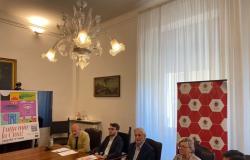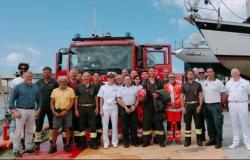In the twenty-second episode of “The Mirror of Piacenza” we enter the largest company in Piacenza and its province, 4,000 employees. In the foreground the story of Paola Bardasi, general director of the USL company.
“The first two years of my mandate, which began on 1 August 2022, were intense and full of challenges – explains Bardasi to the director Nicoletta Bracchi, creator of the television format – I don’t like self-celebrations, but I think it’s right to make an initial assessment. I feel very comfortable here in Piacenza, a city that welcomed me with warmth and professionalism. With my staff, we have started a significant journey, putting many activities in order, but there is still a lot to do. Since my arrival, I have taken a proactive approach. I firmly believe in the importance of transparency and timeliness.”
THE COVID EXPERIENCE
Bardasi also believes in the importance of an equitable and accessible healthcare system, where every individual can receive the care they need. “Covid – he recalls – has created a clear divide between a before and an after in healthcare. In this reconstruction phase, one of our main objectives has been to create greater cohesion among healthcare workers. The hospital is a sacred place where precise rules are needed to guarantee the safety and tranquility of both patients and staff.”
YOUNG DOCTORS
The dialogue with young doctors is fundamental: “Currently, we have 230 trainees. We have increased them tenfold. These young talents represent the future of our company. The hope is that, through a complete and rewarding training course, trainees can develop a strong sense of belonging. The ambition is that once their specialization path is finished, they decide to stay with us. The shortage of doctors is a problem that does not only concern Piacenza, but extends to a national level. At the moment, the shortage of healthcare workers is more acute among nurses than doctors. However, there are some medical specialties in which the deficiency is particularly felt: Emergency and Pathological Anatomy. Today’s young doctors are very oriented towards learning and organization, and want to work in structures that offer them opportunities for growth and continuous comparison. A crucial aspect – he adds – to keep these young talents in the healthcare system is to provide them with modern and advanced tools, such as telemedicine. We have seen the importance of these tools with the birth of Urgent Assistance Centers (CAU). When I arrived in Piacenza, 30 million euros had been allocated for the replacement of all the major technologies: CT scans, magnetic resonance imaging and radiological systems. By the end of the year, all the equipment will have been replaced starting with Fiorenzuola and Castello”.
LOGISTICS AND SPACES
Bardasi never raises the white flag: “There are, however, situations that present particularly difficult constraints, such as hospital logistics and the chronic lack of adequate spaces. One of the challenges I am most proud of was the introduction of mobile PET (Positron Emission Tomography). We opted for a high-end solution on wheels, which has allowed us to offer almost 900 services since the introduction of the service in November. This has significantly reduced transfer requests to Parma. Fixed PET will also arrive soon, a further step forward in diagnostic capacity. I would also like to underline the rebirth of an orthopedic and rehabilitation center in Castelsangiovanni, thanks to the model of the “widespread” Rizzoli, an orthopedic institute recognized as one of the top five in Europe”.
NEW TECHNOLOGIES
The director’s commitment is aimed at integrating advanced technologies and innovative practices “Among these, the introduction of a latest generation surgical robot, an instrument that would not only improve the precision and effectiveness of surgical procedures, but would also be a powerful factor of attraction for young doctors who wish to train and work with the best technologies available”.
THE THEME OF WAITING LISTS
The issue of waiting lists is also delicate: “Our company has already been operating in full transparency since last July. I decided to eliminate the closed lists even before an official resolution was issued. In 80% of cases, we manage to meet the expected response times. For the remaining 20%, we are working to improve. Donations represent a vital resource for our work, every year we receive almost one million euros in donations, a sign of trust. In addition to financial donations, I want to underline the inestimable value of volunteers, a true treasure of civil society.” And then the University of Medicine in Piacenza, a synthesis of knowledge and care. «The master’s degree in “Medicine and surgery” – comments Bardasi – represents an opportunity, but requires careful management to fully exploit its potential. Academia, while different from healthcare, is complementary to it. University research can and must be translated into clinical practice to improve the quality of care. In this context, the key word is “understanding”, aiming to develop a synergy between the academic and healthcare worlds, working in close collaboration to achieve concrete and tangible results”.
The episodes of the format can be seen again on the Telelibertà on demand website.







